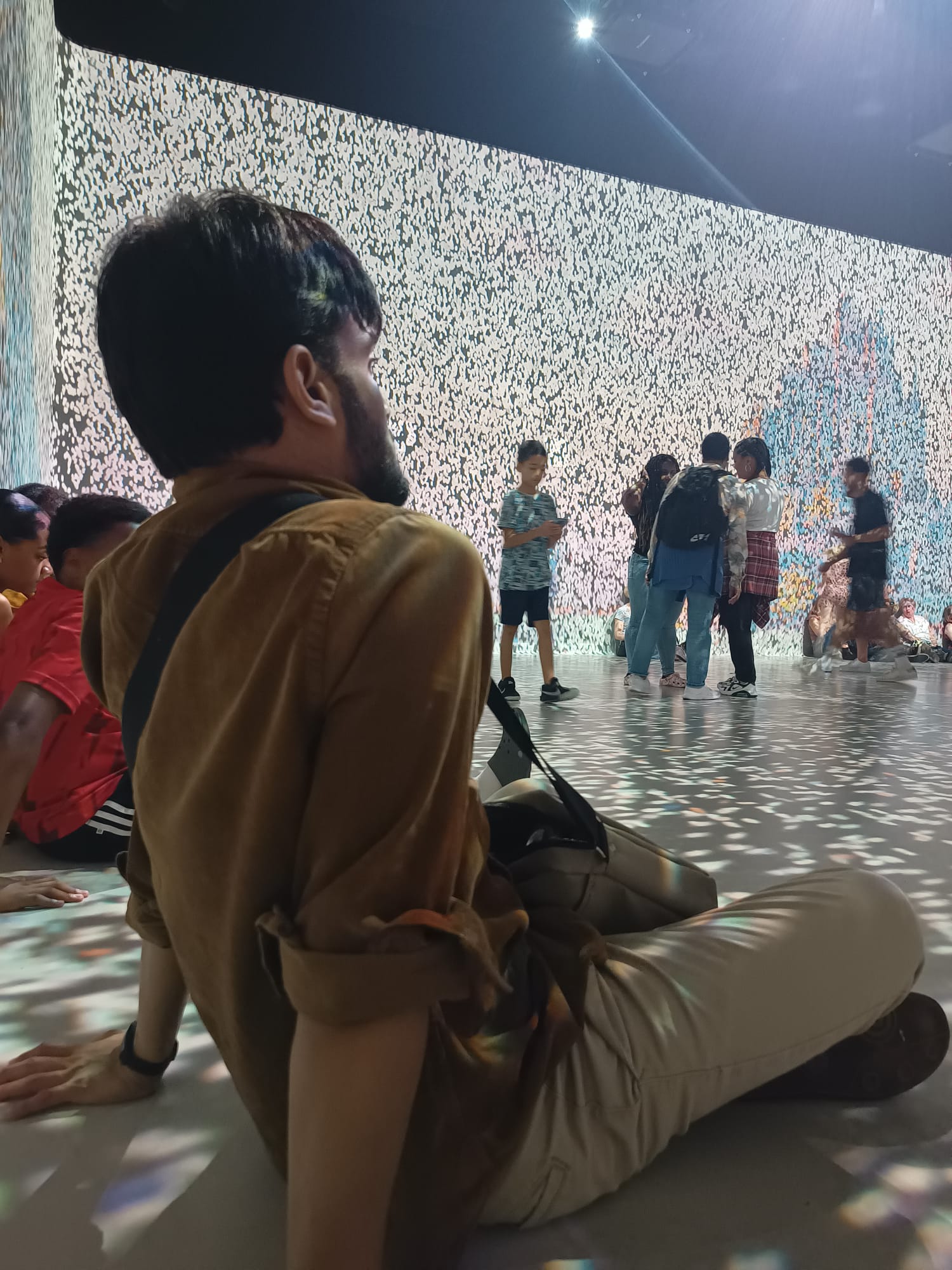| 2 years ago, I went to the immersive Van Gogh exhibition in London and I fell in love with his work, Starry Night, and the idea of being enveloped in art. I felt like it was akin to the escapist elements of a good Netflix show, or cinema, but better – because this type of art didn’t speak to you. You interpreted as freely as you wished to. So when my friend had discounted (if you work in education, there are offers!) tickets for the Frameless exhibition in Marble Arch, I couldn’t say no to the opportunity!
My biggest takeaway was that in one of the rooms, as I stood in the middle and was taking in the sensory stimulus around me, I shifted my focus to the people in the room. Sat/stood around the peripheral edges of the room were the adults of the room; they were sat in silence, or conversing with the people they came with, or bashfully taking pictures. However, in the centre- the children were weaving in and out of columns and pillars, screaming, laughing, making funny faces at the mirrors, playing tag, playing with the colours and sounds on the walls and floors. And there was me, stood almost frozen in the middle of the room as I noticed all of this, wondering to myself; “Does immersion mean to sit and let the art unfold around you, or does it mean to become one with the art? When did these adults stop their playfulness? When did societal judgements and etiquettes become so overpowering, that we stopped allowing us to freely let go and give in to the circumstances around us? What does this mean for my clients, for me and my work?” |

Immersive art holds the power to provide a range of healing effects on individuals. Some of these effects include:
- Stress Reduction: Immersive art environments can create a sense of calm and relaxation, reducing stress levels and promoting mental well-being.
- Mindfulness and Presence: Engaging with immersive art encourages individuals to be present in the moment, fostering mindfulness and helping them disconnect from daily worries.
- Emotional Expression: Immersive art spaces often evoke a wide range of emotions, allowing individuals to tap into and express their feelings in a safe and creative way. I will never not feel this way when I see Van Gogh’s Starry Night, and some of Monet’s work had me feel this way too in this exhibition!
- Catharsis: Immersive art experiences can offer a form of emotional release, enabling individuals to process and release pent-up emotions and experiences. I’d be curious to see if these exhibitions would make for good coaching environments!
- Enhanced Creativity: Being surrounded by innovative and imaginative art can stimulate one’s own creative thinking and problem-solving skills.
- Inspiration and Hope: Immersive art can inspire individuals and offer them a fresh perspective, leading to renewed hope and motivation.
- Connection and Unity: Immersive art installations often bring people together, fostering a sense of community and shared experience, which can be especially powerful in times of isolation.
8. Sensory Stimulation: Immersive art engages multiple senses, providing a rich sensory experience that can be both stimulating and soothing, enhancing the overall well-being. Some immersive art environments are designed to promote physical relaxation through elements like soothing lighting, sounds, and comfortable seating.
9. Positive Neurological Effects: Exposure to aesthetically pleasing immersive art can stimulate the brain’s reward centres, leading to the release of feel-good neurotransmitters and enhancing mood. Especially if one of your character strengths is Appreciation of Beauty and Excellence! (My clients will know what I mean!)
10. Personal Growth and Reflection: Immersive art experiences can prompt self-reflection and personal growth, encouraging individuals to contemplate their beliefs, values, and aspirations.
11. Reduced Symptoms of Anxiety and Depression: Engaging with immersive art has been shown to have positive effects on reducing symptoms of anxiety and depression in certain individuals.
Overall, immersive art offers a multi-dimensional approach to healing, addressing various aspects of the individual’s well-being – emotional, psychological, and even physical – through the power of creativity, sensory engagement, and self-expression. Have I convinced you to try it out yet? Let me know which exhibitions you recommend!

